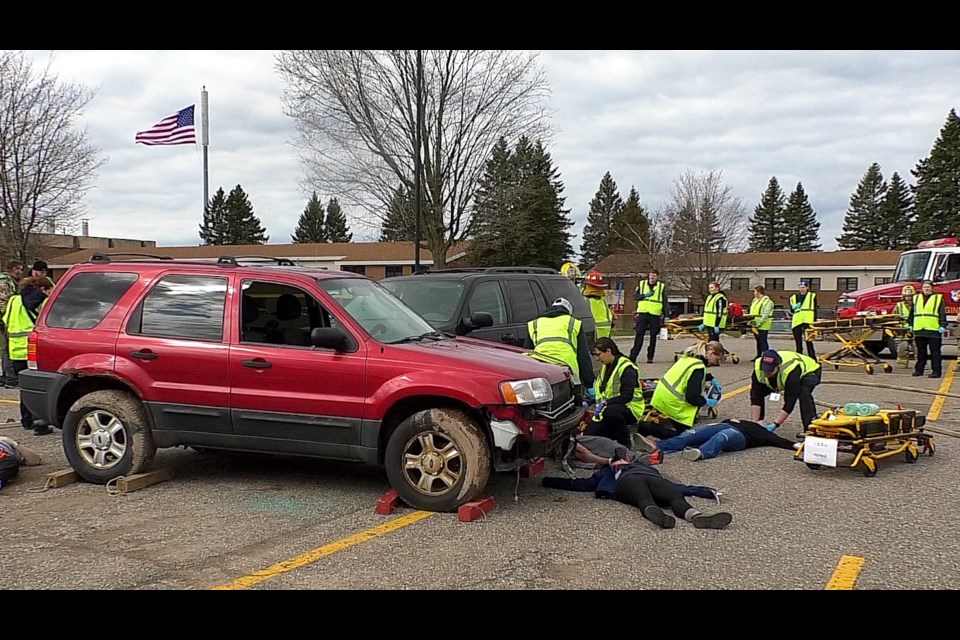"Lake Superior State Fire, EMS, and on-site dispatch, you are requested to lot A at the bookstore for a tornado touchdown and a building collapse."
That call came out at 10:30 a.m. Friday from Central Dispatch command post inside the Lake Superior State University's Art Center lobby.
It officially started the mass casualty event for the yearly inter-professional exercise to help train students from the LSSU's nursing, emergency service, fire science and criminal justice departments for when they graduate and get jobs in their career fields.
The students trained alongside first responders from Sault Ste. Marie Fire Department and EMS and nurses from MyMichigan Medical Sault.
The Mackinac County 911 coordinator and Chippewa County Center Dispatch director were on the scene as well.
Retired Mackinac County Sheriff Scott Strait is this year's director of the drill.
"This exercise is for those rare events that we have. They just don't happen in big cities. In an area like ours, we have to allocate our resources and make sure we know what everybody is capable of doing. This is an experience that the students can take with them so when the real-world event happens, they can understand it, recognize it, and act accordingly to provide the best service they can to the communities," Strait said.
Kathy Berchem, Dean for the College of Health and Emergency Responders, says LSSU has done this yearly exercise for the past half-dozen years or so.
"At Lake Superior State University, we focus on high-impact practices. We just don't want the students to learn in the classrooms but learn in hands-on type experiences. It's important to build the communication skills where they would work with these actual practitioners and learn the skills that if there ever was an event, that they are prepared," Berchem said.
Nursing student Maranda Andrews, watched the exercise last year, but this year, she was a part of it. Instead of being a first responder, she was one of the injured.
"Having the view as a patient helps us build that sympathy and empathy to make a connection with our patients. It's great to be out here just to see all the perspectives and how everybody works as a team," Andrews said.
Bryan Fuller, emergency medicine assistant professor at LSSU, praises the effort that goes into an exercise like this.
"An exercise like this gives our students the experience something they will see in their career, probably earlier than later. They can reflect back on it later to see how much work went into it and the coordination with other entities on scene to make it move effectively and this should give them something to look back on and say 'Yes, I can do this again'," Fuller said.
While the actual mass-casualty exercise only takes a few hours to complete, it takes a lot of work for this day to happen.
"Organizing this exercise takes months. We work closely with local community public safety and the local hospital so we can give them the best possible experience," Strait said.
Planning for next year's exercise will start as soon as they review all the data and video of the event.
"We are going to produce an after-action report that will show what we did right and what we did wrong, where we can improve our teaching, where we can improve the experience for the students so they have a good solid base of experience when they go out in the world," Strait concluded.



